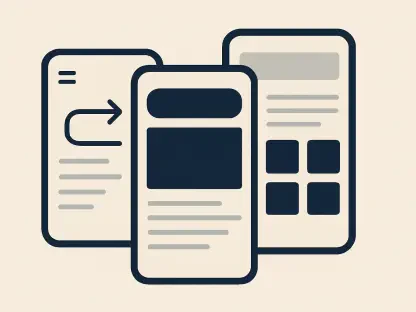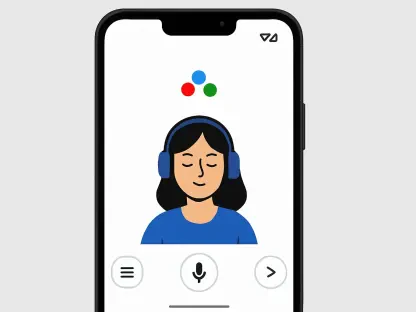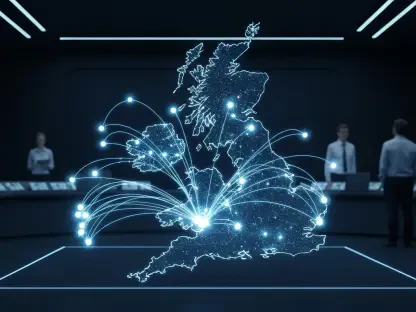I’m thrilled to sit down with Nia Christair, a true pioneer in the realm of mobile technology and innovative concepts. With a rich background in mobile gaming, app development, device hardware design, and enterprise mobile solutions, Nia brings a unique perspective to the table. Today, we’re diving into a fascinating experiment dubbed ‘Bird Drive,’ where a starling was used to store and deliver data through sound. Our conversation explores the creative inspiration behind this idea, the intricate process of encoding digital images into audio for a bird to learn, the challenges of training a living creature to act as a storage medium, and the broader implications of such unconventional approaches to data transfer.
How did the concept of using a bird, specifically a starling, to store and deliver data come about? What sparked this wild idea?
Honestly, it started as a bit of a thought experiment. I’ve always been fascinated by the intersection of biology and technology, and I wondered if nature could offer solutions we hadn’t yet tapped into for data storage. Birds, especially songbirds like starlings, have incredible vocal abilities, so I began to imagine if they could act as a living medium for audio-encoded data. The idea gained traction when I learned about a starling that had been exposed to unique sounds early in life, making it a perfect candidate for something this out-of-the-box.
What made a starling the right choice for this experiment over other birds with strong vocal skills?
Starlings stood out because of their syrinx, a vocal organ that allows for incredibly nuanced sound production. Unlike parrots, which are great mimics but often focus on speech, starlings can handle a wider range of complex waveforms. Plus, the specific starling we worked with had a unique upbringing near a noisy environment, which seemed to prime it for picking up and reproducing unusual audio patterns. It felt like the perfect match for testing this concept.
Can you tell us about the starling’s background and how its early life influenced its role in this experiment?
This little starling was rescued as a chick after being found near a busy train track, abandoned by its flock. Raised by humans in that noisy setting, it grew up surrounded by mechanical sounds and reverb-heavy noises, which isn’t typical for wild birds. That exposure seemed to make it unusually receptive to synthetic or unnatural audio, like the waveforms we used. I think that early environment played a huge role in its ability to learn and mimic the specific sounds we introduced during the experiment.
Walk us through the process of turning a digital image into sound for the starling to learn. How did you approach this transformation?
It was a complex but exciting challenge. We started with a simple PNG image—a line drawing of a bird—and used a spectral synthesizer to encode it into an audio waveform. Essentially, we translated the visual data into a series of frequencies and patterns that could be played as sound. The goal was to create something the starling could hear and potentially memorize. We fine-tuned the frequencies to stay within a range we believed the bird could reproduce, balancing technical precision with biological limits.
What was it like training the starling to ‘upload’ and mimic this audio data? Can you share some of the hurdles you faced?
Training the starling was a mix of patience and trial-and-error. We played the encoded sound repeatedly over several days, ensuring consistent exposure without overwhelming the bird. One major hurdle was getting it to mimic the exact waveform—birds naturally add their own flair to sounds, so precision was tough. There were moments of frustration when the output wasn’t close enough, but we adjusted playback techniques and gave the bird time to adapt, which eventually paid off.
When you first heard the starling recreate the waveform on its own, what went through your mind?
I was floored. We’d been analyzing hours of recordings, and suddenly, there it was—a waveform that mirrored the original image’s audio encoding. It happened after we’d stopped playing the sound, which suggested the bird was recalling and reproducing it independently. I didn’t expect such fidelity, honestly. We confirmed the match by running the bird’s vocalization through the same decoding process, and seeing the image emerge again was just surreal.
You’ve mentioned a data transfer rate of around 2 megabytes per second. How did you arrive at that figure, and what does it mean in the context of this experiment?
That figure is speculative, based on the amount of uncompressed data we estimated the bird reproduced—about 176 kilobytes in a short burst. We assumed some level of compression and calculated the rate from there, landing at roughly 2 megabytes per second. It’s a theoretical benchmark, not practical, but it’s interesting to compare to other experimental storage methods like DNA, where readout speeds are often slower. Of course, this bird-based approach lacks the reliability of those systems.
On the practical side, what are some of the biggest limitations you see in using a living creature like a starling for data storage?
Oh, there are plenty. For one, consistency is a huge issue—you can’t command a bird to ‘retrieve’ data on demand like you can with a hard drive. There’s no guarantee it’ll retain the sound long-term or reproduce it accurately every time. Security is another concern; the bird could theoretically ‘share’ the data with anyone nearby. And scalability? Forget it. This is more of a poetic experiment than a viable solution. It’s a bird, not a server—it could literally fly off with your data!
Looking at the bigger picture, what do you think experiments like this teach us about blending biology with technology?
I think they remind us to think beyond conventional tools and explore what nature can offer. While a starling won’t replace an SSD anytime soon, experiments like this push us to consider how biological systems—like vocal learning or memory—could inspire new tech. It’s about asking ‘what if’ and seeing where those questions lead, even if the outcome is more conceptual than practical. It’s a way to spark creativity in how we approach data and computation.
What’s your forecast for the future of unconventional data storage methods like this one?
I believe we’ll see more experiments that blend organic and synthetic systems, especially as we grapple with the limits of traditional storage in terms of energy and scalability. While bird-based storage is unlikely to become mainstream, the principles behind it—using natural mechanisms for data encoding—could inform niche applications or bio-inspired tech. I think the next decade will bring more hybrid ideas, borrowing from nature to solve digital challenges in ways we can’t yet predict.









